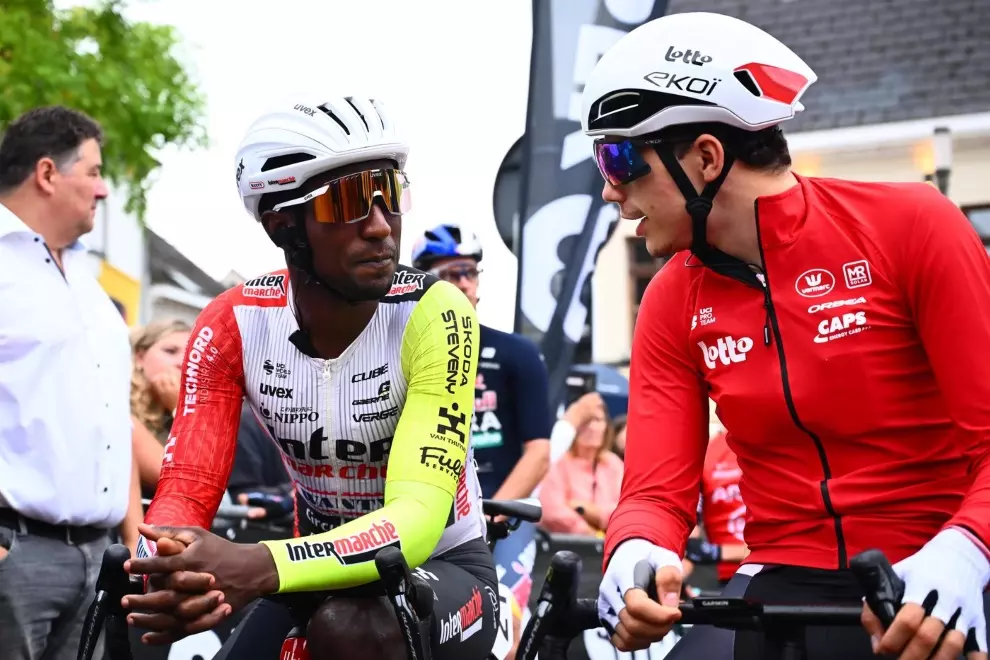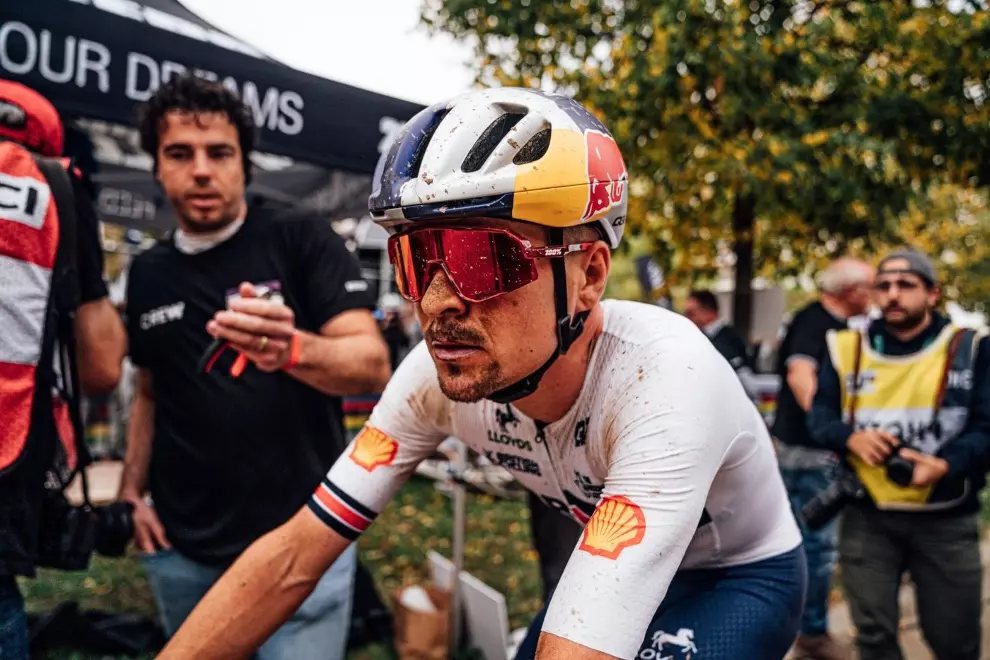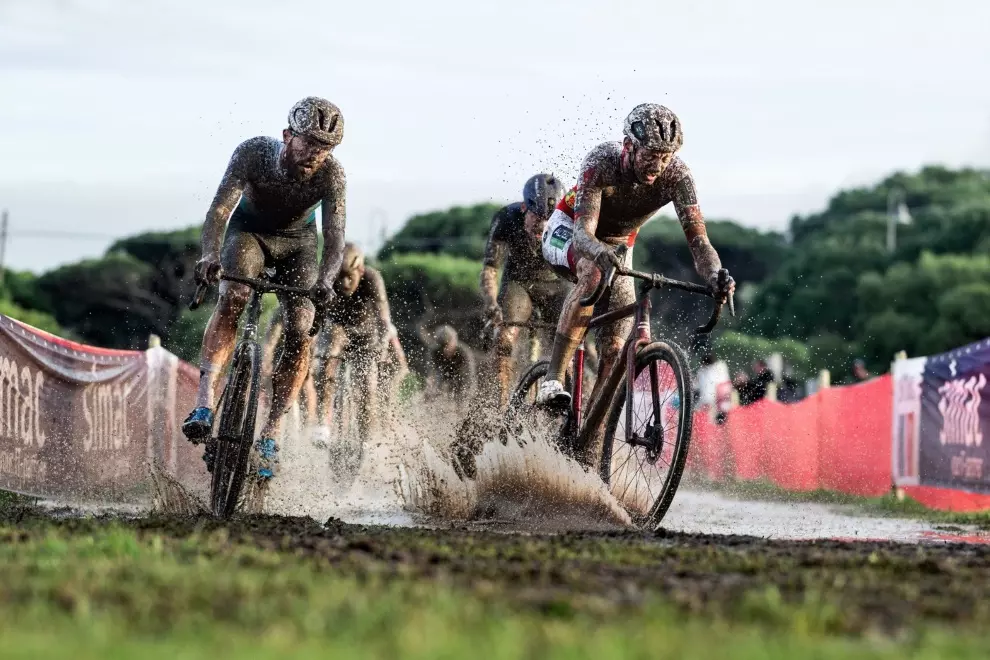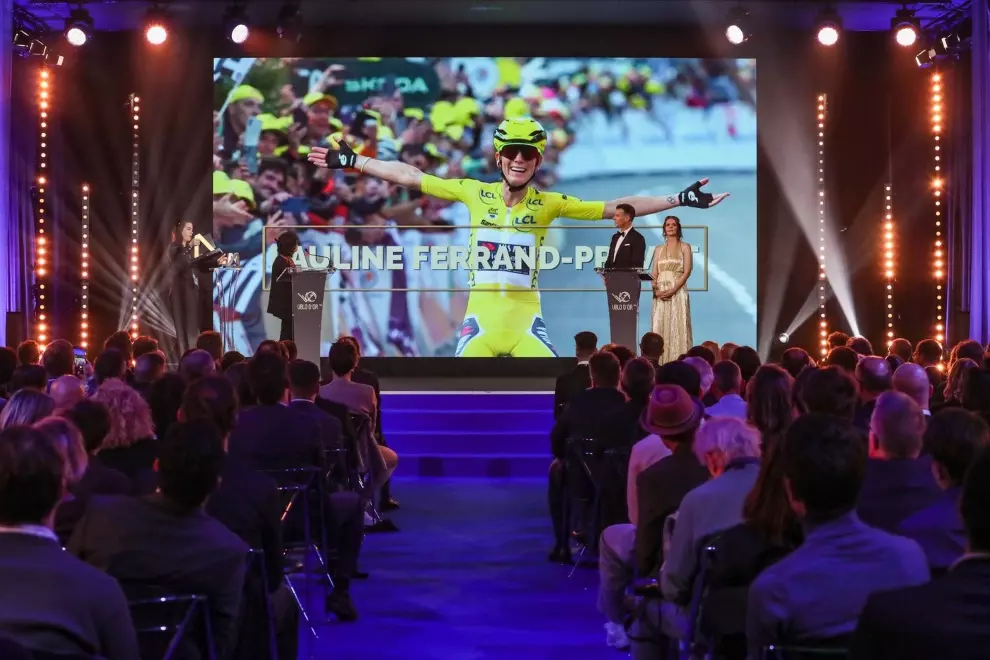While helping his teammates to Grand Tour glory, Kuss didn’t do badly himself: he finished 14th in the Giro, 12th in the Tour and then stood in the top spot of the podium in the Vuelta, a remarkable achievement for any rider, but unheard of for a humble domestique. But when Visma’s fortunes hit the rocks in 2024 due to a series of bad crashes, Kuss also had a bad year.
A bad patch for the team and the rider
With both Vingegaard and Wout van Aert sidelined due to injuries, he became the team’s de facto GC rider in the spring, but without success. After spending two months on the sidelines following a crash and abandonment in the Critérium du Dauphiné, he came down with Covid and was unable to ride in the Tour. Healthy again, he won the GC and a stage of the Pro-level Vuelta a Burgos, but riding for GC success in the Vuelta, he finished 14th, never coming closer than 8th place in any stage.
But he looked good chasing down breakaway riders for van Aert before the latter suffered a serious knee injury in a crash when he seemed certain to win the points classification. Adding insult to failure, the race was won by former Visma teammate Roglič riding for his new team, Red Bull–BORA–hansgrohe. (Kuss did not ride in the 2024 Giro, apparently because of the amount of time trialling in the race, the same reason he gave for skipping this year’s Giro.)

Visma’s fortunes have definitely improved this year as the team has already racked up 21 victories, including a dramatic win by new signing Simon Yates in the Giro. However, heading into the Tour, many uncertainties remain, including Kuss, who will need to be at his very best for Vingegaard to have a sliver of a chance of beating arch-rival Tadej Pogačar (UAE Team Emirates–XRG) in the Tour. But how is his form, and what role will he play? So far, he has not been impressive.
He was scarcely visible in the Volta ao Algarve in February, which Vingegaard won, and was of little help to Yates in the Volta a Catalunya in March when the Briton finished ninth. Then, riding for his own GC glory in the Itzulia Basque Country, he was dropped on a big climb, crashed on stage 5 and abandoned the next day. He was 65th in the GC at the time. He looked better in the Dauphiné while working for Vingegaard and finished 13th, but he was eclipsed by teammate Matteo Jorgenson, who is having a very good year, after winning Paris-Nice, and was often the last support rider for Vingegaard on the climbs.
What role in the Tour?
It would be strange, and unprecedented, if Kuss was not the last man riding in front of Vingegaard on the way to the summit of Mont Ventoux (15.7 km @ 8,8%) at the end of stage 16 of this year’s Tour. But that is a possibility. Speaking to reporters in January, Kuss suggested that his role had changed because racing has changed, as riders whose strength is a steady and long pull up a steep slope have become less important than climbers with a more explosive style.
“These days, you need riders who can really accelerate at the right moment – you don’t make such a difference at riding a [steady] hard pace anymore,” he said. “The level is so high now, you need really specific riders for specific moments.”
Which is one way to explain the importance of Simon Yates to the team, not only as a Grand Tour winner, but as a Tour domestique who could keep pace with the explosive Pogačar. Which means that Kuss will probably be used, as he was in the Dauphiné, to maintain a high pace on intermediate climbs to weaken rival teams, rather than being the high-profile strongman on the slopes he was until last year. And that, he said, suits him well.
“It’s more comfortable being out of the spotlight; there are fewer expectations for sure from the outside,” he said. “I have the same expectations or motivation for myself, but for the kind of person I am, I’d rather be out of the spotlight.”
And his ambitions have become more modest as well. He said that his goal in 2025 is to be more consistent and help the team win the Tour and the Vuelta. “My main goal is being the best I can be at those two races,” the 30-year-old American said. “I’m not racing too much in the spring, and I’m not always at my best at that time, so I want to use that as a base to build for the summer. The focus is going to be there.”
In any case, the Grand Tours have increasingly come down to individual riders facing off against each other on the decisive climbs. Domestiques are important in maintaining a high pace, or helping position the team leader before a climb or a tricky descent, or chasing down attacks on the climbs. But when the racing gets serious, it will be mano a mano, Pogačar against Vingegaard against Evenepoel against Roglič, etc. Sure, there is no I in the word team, but on a steep slope to a summit finish at 2,000m altitude, it’s usually every man for himself.




